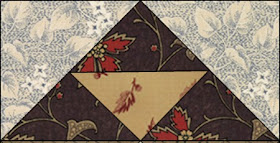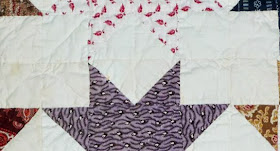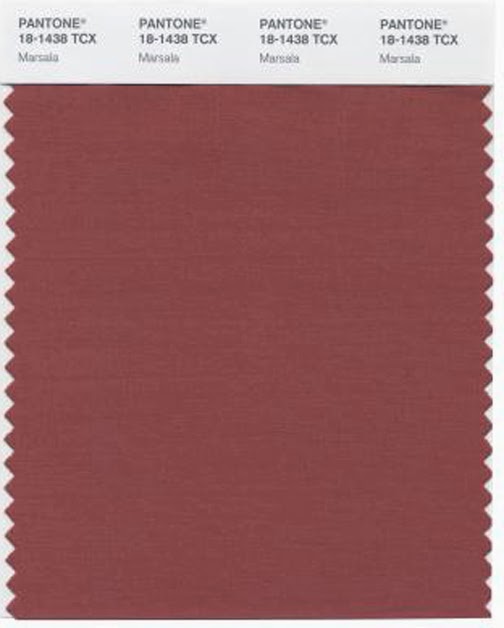The original print
I was looking through the current quilts on the online antique sites
and came across this very nice detail shot of a very nice leaf print.
Wait a minute. I know that print!
The reproduction print Bloomington
The reproduction print is #8307 in my Richmond Reds fabric line.
Read more about the Bloomington print here:
The vintage version is set with the blue-on-blue print we tend to call Lancaster blue today---a good clue to a quilt from about 1870-1900. The other browns in madder-red shades could be 1840-1890 and the geometric brown looks to be that brown-on-blue style typical of the 1880s. So I am guessing
the quilt top is about 1870-1890.
It's that mid-to-late-19th-century look I was interpreting
in both the Richmond Red and the Union Blues collections.
The coloring is updated, toned-down fashion.
BlockBase #3161
It took me a while to find the pattern in BlockBase because I was looking at is as a triangular block, but it's actually a square block placed on point. I found it in the category of two-patch blocks
with a basic structure like this.
A digital sketch of the block in the old top.
The triangles are seen as birds so it has several avian names, like Birds in the Air or Flying Birds, published in the 20th century. In her 1935 index to patterns Carrie Hall called it White Cloud...
White Cloud in 1951
(probably because there is a town called White Cloud near her Leavenworth, Kansas home.)
Carrie Hall Sampler by Susan.
She finished it off with a border of the White Cloud Block
Birds in the Air quilt by Patti Mersmann Poe, 1996
Patti made this for my Quilts from the Civil War book in the '90s.
I should have recognized the block as I've often seen the bird names as symbolic of freedom and used it in Civil War reproduction quilts. See a post on the block from my 2011 Civil War Sampler block of the week here:
I guess it took so long for me to find the pattern, because I was too focused on the tree (the leaf print) rather than the forest (the patchwork pattern.)
While working on this post I found another vintage example of the leaf print
in a mid-century star quilt...
And then this one, a tumbler block
in a quilt dated "Centennial. 1876"
Both very much like my document swatch.
It's apparently a classic.
Kelly Cline used the red reproduction in her recent
top.
She used a pattern by Denniele Bohannon
published in the Winter 2015 edition
of Quilting Quarterly.
The other two fabrics she found in my garage sale when I sold off my boxes of chintz reproductions. I'd had those two prints for 20 years and hadn't done much with them. Kelly took off in a new direction.

.jpg)

.jpg)













.jpg)











































